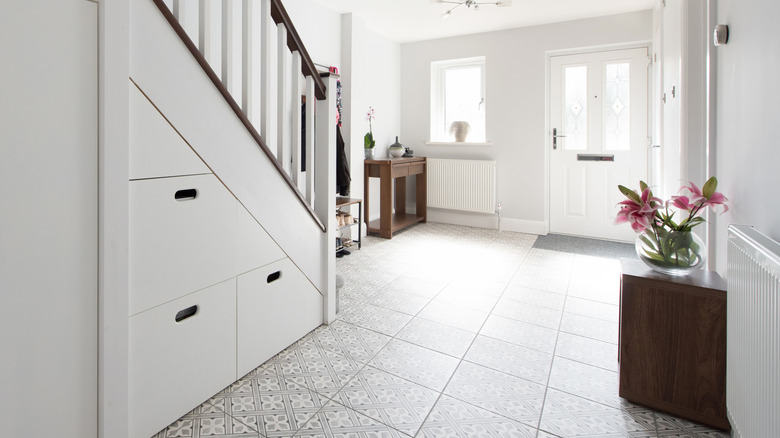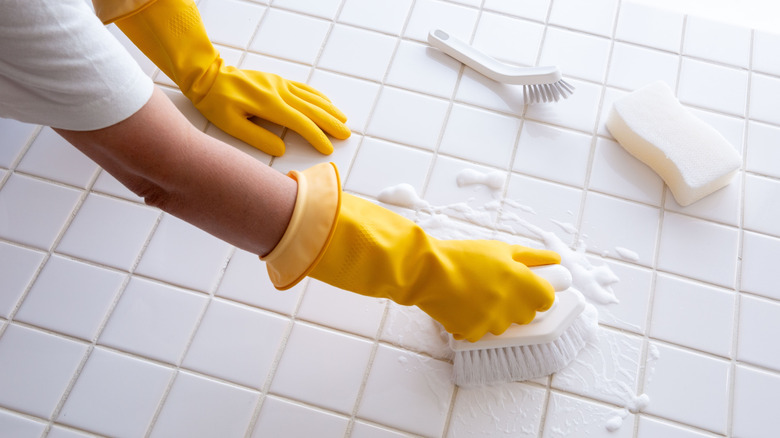Why Epsom Salt Is Your Secret Weapon To Cleaning Your Tile Floor's Grout
Tiled flooring is a popular option for high-traffic areas in the home, including hallways, kitchens, and bathrooms. They are known for being durable, hard-wearing, and easy to clean. However, one common annoyance is that the grout in between the tiles can get dirty and become discolored, which makes it tricky to get it back to its original state. If you have black or a dark-colored grout, this won't be as much of a problem. But, if you have white or a light-colored grout, then you're going to notice this issue pretty quickly.
There's an easy and simple solution to clean your grout, and that's Epsom salt. Epsom salt, otherwise known as magnesium sulfate, is a chemical compound constructed of magnesium, oxygen, and sulfur. It's commonly known for being used in supplements or bath products. This is all well and good, but why is cleaning grout a smart way to use Epsom salt around the house? The abrasive texture of Epsom salt works wonders in getting in the gaps between your tiles and the chemical reaction will easily break down any dirt or mold that may have collected in your tiles. Using epsom salt to clean your tiled floors will leave you with sparkling grout with minimal effort, dirty grout lines will be a thing of the past.
How to clean tiled floors with Epsom salt
Take your Epsom salt and use a damp microfiber cloth soaked in warm water to rub it into the grout in between your floor tiles. If you can, leave the Epsom salt to soak into your grout overnight, then wipe off the residue with a fresh cloth the next day. You will be left with grout that looks as good as new.
If for some reason this hasn't quite tackled the problem fully, you can create your very own dirty grout-busting solution using Epsom salt, baking soda, and liquid dish soap. All you need to do is combine 1 cup of Epsom salt, 1/2 cup of baking soda, and 1/4 cup of liquid dish soap to form a thick paste. You can then apply this mixture with a toothbrush or scrubbing brush to get in all the crevices. Again, it's a good idea to leave it to sit and soak for as long as you can, so the mixture has as much time as possible to have a transformative effect. One thing to be aware of is that if you have particularly porous floor tiles, such as natural marble, you may want to ditch the Epsom salts and try something a bit more gentle instead. Because such materials are so delicate, the salt can seep into the stone and cause visible and long-lasting damage.

